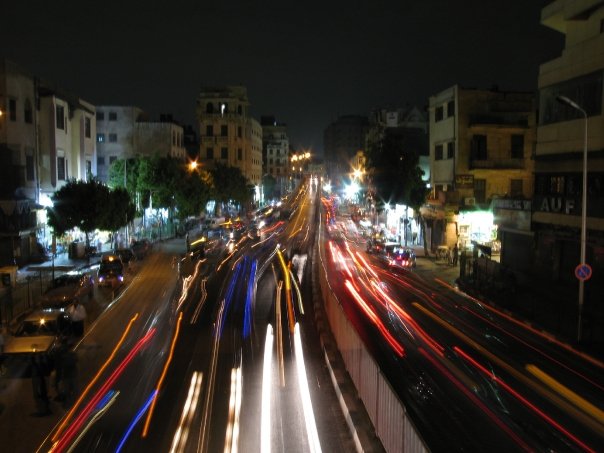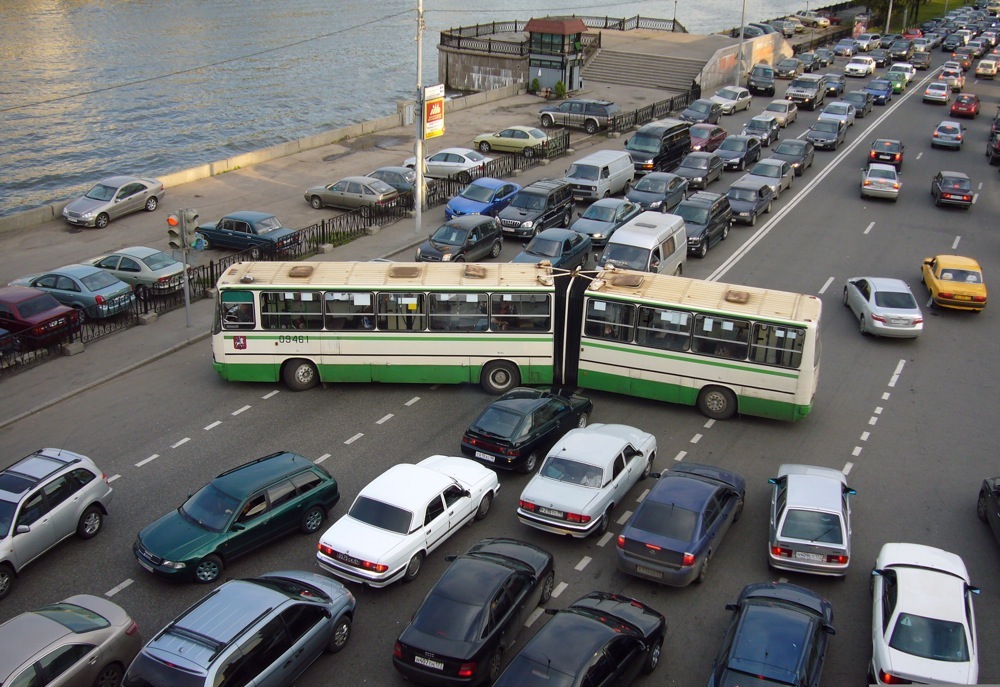Egypt has embraced the “Happy” phenomenon with videos showing people dancing and smiling and generally sending out good vibes. We like to think that represents our attitude towards life, and it might even be true. Up until the moment we, as Egyptians, turn on our cars.
In that instant, a switch is flipped, and the song that occupies our collective subconscious is a ludicrously enjoyable release from 2002. Taking a look at our behavior behind the wheel might tell us things about ourselves that we usually try to brush under the carpet. Here are a few:
Honk Honk, Light Light

The New York minute is defined as an instant, i.e. the length of time between the light turning green and the car behind you honking its horn. We need the femtosecond to measure the Egyptian equivalent. When people fail to take a hint, a few headlights to their rearview mirror should help convince them of the error of their ways. Or maybe to get rid of their rearview mirror!
The cacophony on the streets of Egypt is unrivaled. Honking has replaced speaking as the primary mode of communication, with the minor drawback that everybody is talking honking at once and no one understands what anyone else wants. Well, maybe not that different after all.
So What Does It Tell Us?
Not shy about making our feelings known, we are ready to leap into action at a moment’s notice. There is a decidedly insistent passive aggressive undertone to many of our interactions. The lack of a coherent system of laws governing traffic means that our daily interactions rely on a constant stream of instant negotiation and the desire to both hold on to any gains, small as they may be, while fighting tooth and nail to prevent any (perceived) losses.
If someone even hints to slow down on the road, they will be bombarded audio visually with an incessant stream of honks and headlights, reflecting a significant degree of circumstantial extroversion and willingness to engage – whether positively or negatively – due to external factors. Reinforcing this proposition is the fact that the same people do not exhibit the same pattern of engagement in other settings.
The Bottleneck Pileup

One of the phenomena that commuters will experience daily is the bottleneck pile up. Where lanes merge, there is more often than not a squeeze, shaped like a funnel, with cars attempting to squeeze in from all directions. It is quite normal to observe someone passing you on the right, only to find them driving perpendicular to the current street direction in an attempt to squeeze in ahead of the line. Not about to be outdone, others will follow suit and soon there are multiple directions and a potential gridlock situation.
Egyptians believe in never giving up on what they believe in, be it truth, integrity, or their right of way. This causes a few problems at these bottlenecks, because when a number of people who are utterly convinced of their position cross paths, compromise becomes more difficult. Right of way is determined by the size of vehicle, because a bus can go wherever it damn well pleases.
So What Does It Tell Us?
It points to a respect for strength and a disdain for weakness; the belief that “might is right” may be a dangerous one because it allows for a shifting understanding of right and wrong, and might be a contributing factor to the communal tendency to blame the victim. Or it just may point to a severe necessity for more driving schools.
Bullet Time Frogger

There is a notion that crossing the road in Egypt requires faith and trust. Faith in the kindness of your fellow human’s heart and trust in the concern of your fellow man (or woman because this is not Saudi Arabia) for your safety. These notions will evaporate like morning dew in the Sahara the very second you put your foot on the asphalt, as the very first car zips by mere inches away from your face.
You will then find what is actually needed to cross the road in Egypt are lightening reflexes, an ability to manipulate bullet time and the assumption that the average driver is actively out to kill you.
There are two teams in the road crossing scenario, with shifting allegiances. A driver raging at suicidal pedestrians and their inability to comprehend basic physics (which tells us that a large metal object going at tens of kilometers per hour will not lose in a collision with a small bit of organic matter held up by some calcium) will, shortly after parking their car, wonder at the complete and utter disregard of drivers for their fellow humans.
So What Does It Tell Us?
Apart from developing reflexes and providing a pool of potential recruits for fighter pilots, crossing the road in Egypt in general and Cairo in particular develops the important cognitive skill of pattern recognition. In many of our roads, there are few allotted spots for crossing safely and where there are they tend to be ignored. This necessitates the ability to instantly determine the speed of numerous oncoming objects simultaneously and act accordingly.
On the flip side, the drivers that appear to have no concern for the welfare of pedestrians are merely using their fairly refined body language interpretation skills to assess the intentions of any particular pedestrian. Except for bus drivers – those guys hate you.
Wrong Way!

There is a reason that there are very few two-way roads without a magnificently high pavement divider in Cairo – and that reason is spillover. A simple white line painted on the asphalt holds no power here. At the first hint of slowing traffic, the spillover begins and as soon as the cars headed in one direction begin to slow, an enterprising driver will inevitably cross the line and drive on the wrong side of the road. In the spirit of one upmanship, others soon follow and what was at one point a relatively serene scene becomes an artificial bottleneck blocking both directions at once, because if you are going to make the effort to mess something up, then why not go all the way.
So What Does It Tell Us?
Seeking the path of least resistance and seeking to circumvent expected slowdowns does not a great personality develop. Escapism has a tendency to create larger problems later on along the road. There is an inherent predisposition to avoid a problem until it becomes so big that it is no longer possible to ignore it – and then we attempt to resolve it by shouting a lot and finding someone to blame.
Traffic Light Countdown

At the start of a race, a large, clear, well-lit numerical countdown display is visible to all drivers so they all have the chance to dash out at the same time. This is also the case in Egyptian traffic lights; it was the only way to convince Egyptians to stop there. That and the rather large cameras that are the cause for hefty fines.
Taking it in stride, the first line at the traffic light will drive off like they are in pole position for Formula 1, only to stop meters away because this is still Cairo and traffic is apparently infinite.
So What Does It Tell Us?
The fact that Egyptians refuse to stop at traffic lights unless they can literally count down the seconds they have to wait and can see the incredibly large camera pointed at them hints that we may have a minor problem with the law. Rather than understanding the fact that respect for the law is in the interest of everyone if everyone respects the law (circular logic?), we take the approach that if the authorities really cared about it, punishments would have been enforced, and since they don’t, then it doesn’t matter.
WE SAID THIS: Don’t miss “10 Egyptian Concepts that Need to Change” and “An Open Letter to Egypt’s Road Authorities“.


